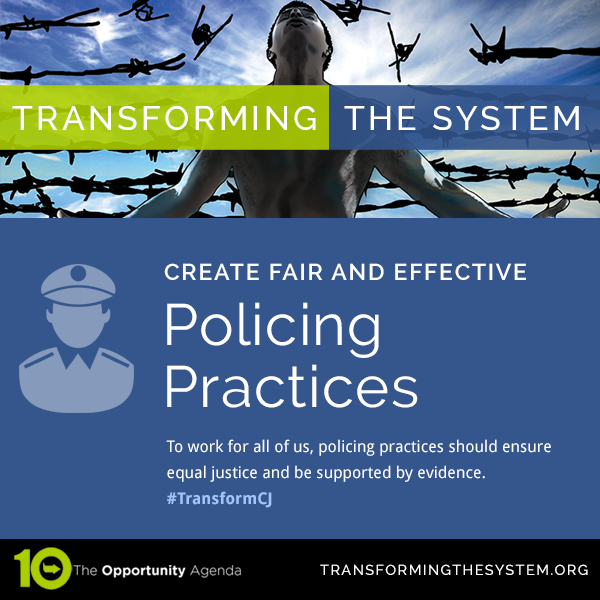Establishing national use of force guidelines
Use of excessive force erodes public confidence in the police, decreases legitimacy, and gives the impression that police view themselves as above accountability. “[U]se of force by law enforcement officials should be exceptional.” Accordingly, strong standardized use of force policies that are infused into police culture through adequate training, monitoring, and accountability should be adopted. A national standard for use of force with a standard policy and protocol should aim to greatly reduce instances of excessive force.
To this end, Congress and the Department of Justice should:
- Adopt clear and comprehensive use of force policies, which should include training that emphasizes de-escalation, proper use of equipment and weapons, and respect for gender identification. Moreover, these policies should prohibit the use of racial profiling and incorporate performance measures and investigations (internal and external) of officer-related use of force (particularly shootings and in-custody deaths);
- Establish a National Use of Force Handbook that outlines recommendations that ensure compliance with constitutional and statutory obligations, encourages community legitimacy, and requires that applicants for federal funds comply with these guidelines. The recommendations must be consistent with the Police Executive Research Forum Use of Force Principles; and
- Require that police departments that receive federal funds conduct non-punitive peer reviews of incidents involving use of force, separate from criminal and administrative investigations. For example, following each incident of force, police peers should review the incidents and provide feedback to the officer involved in the incident. This feedback should not be punitive to foster honest critique.
Local governments and police departments should ensure that:
- Police are thoroughly trained on the Department of Justice Guidance on Preventing Gender Bias in Law Enforcement and required to follow the guidelines, which include provisions on policing individuals with various gender expressions and responding to domestic disputes;
- Police leadership strongly discourage the use of force against pregnant women and children, creating clear and objective standards for the very rare situations in which it may be allowed; and
- Improve management by creating a Use of Force Management Institute for police leaders and a Use of Force Management publication for city officials.
Further, law enforcement agencies should adopt the Use of Force principles recommended by the Police Executive Research Forum. These principles include:
- Placing the “sanctity of human life” at the heart of the agency’s work;
- Adopting policies that require reasonableness and proportionality;
- Formally adopting de-escalation as an agency policy;
- Adopting a Critical Decision-Making Model, which requires officers to quickly collect information, assess threats, consider agency policy, and adopt options that allow for the best course of action, and reassessment;
- Requiring officers to intervene to prevent other officers from using excessive force;
- Requiring officers to promptly provide medical assistance to injured persons;
- Banning the shooting at vehicles;
- Prohibiting the use of deadly force on persons who pose a danger only to themselves;
- Documenting use of force incidents and ensuring that the practices are non-discriminatory;
- Ensuring that use of force incidents resulting in serious bodily harm or death are reviewed by specially trained personnel;
- Ensuring transparency in practices;
- Ensuring that the training academy reflects these values;
- Replacing unproven and ineffective force guidelines, such as the “21 foot rule” and “drawing a line in the sand,” with effective guidelines to reduce the use of force, such as “Distance, Cover, and Time.”
- Mandating comprehensive training for interacting with individuals who have mental health issues;
- Ensuring that there is substantial scenario-based training, which challenges officers and reflects real-world circumstances; and
- Requiring public education that teaches communities how to communicate with the police about individuals with mental health issues.




